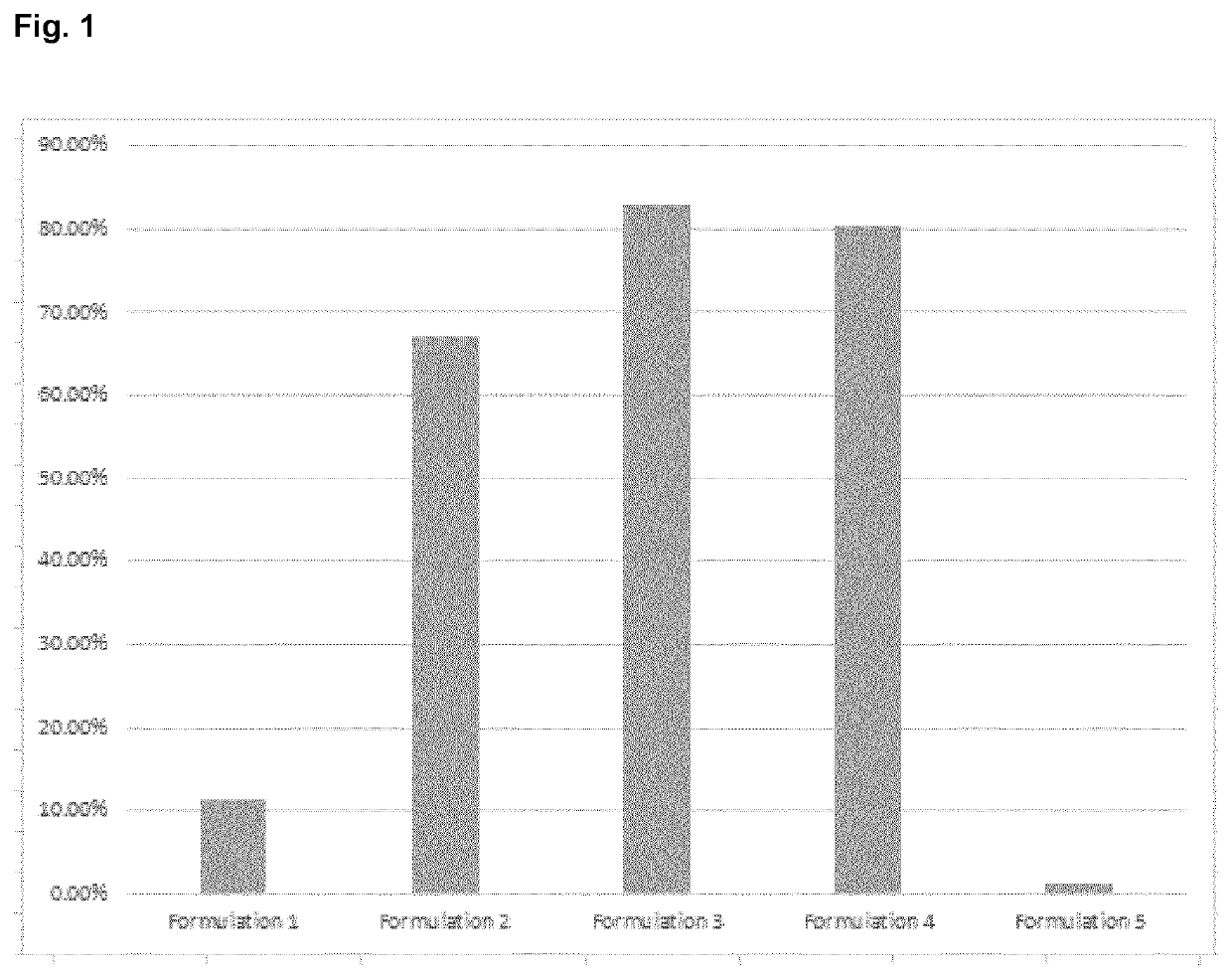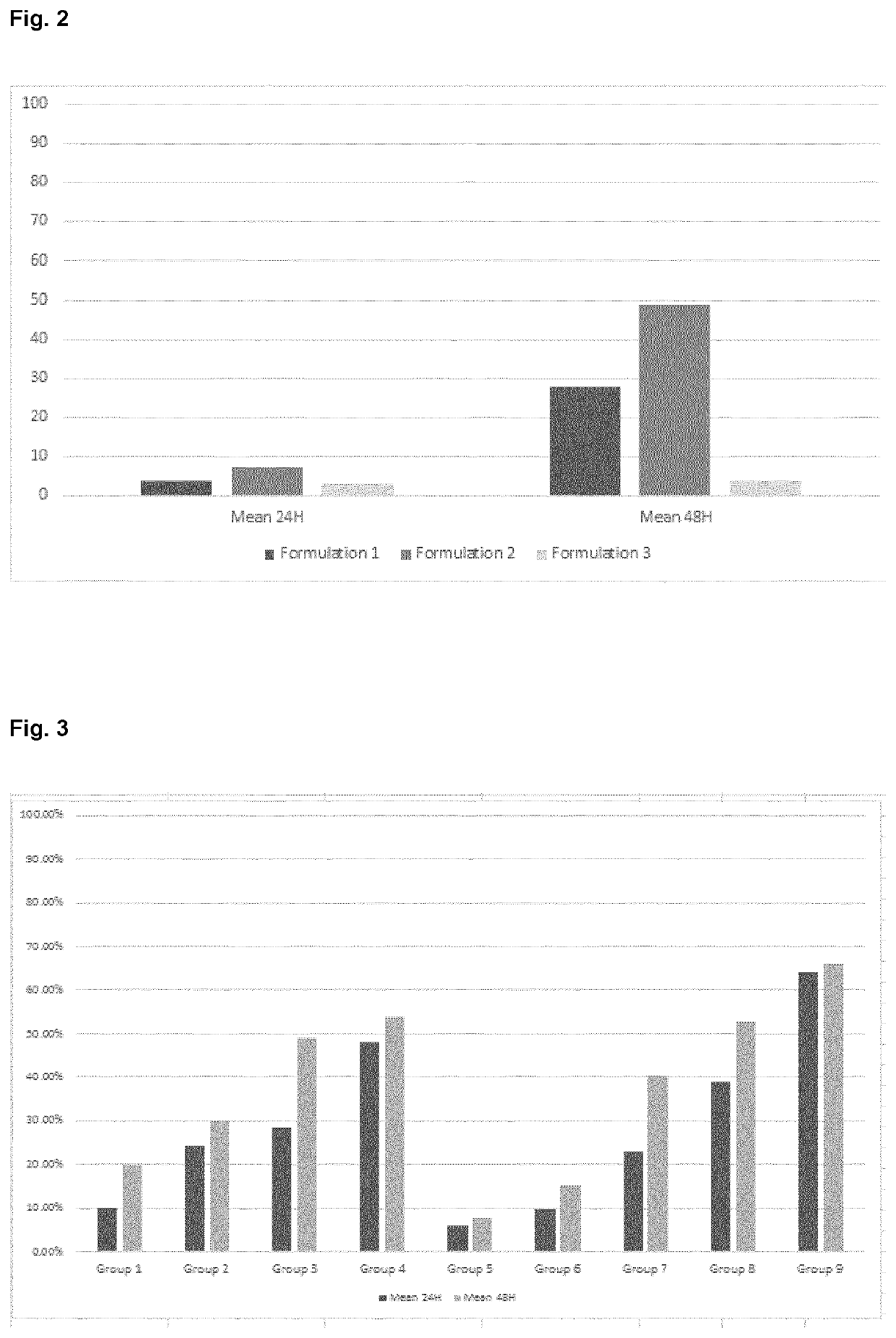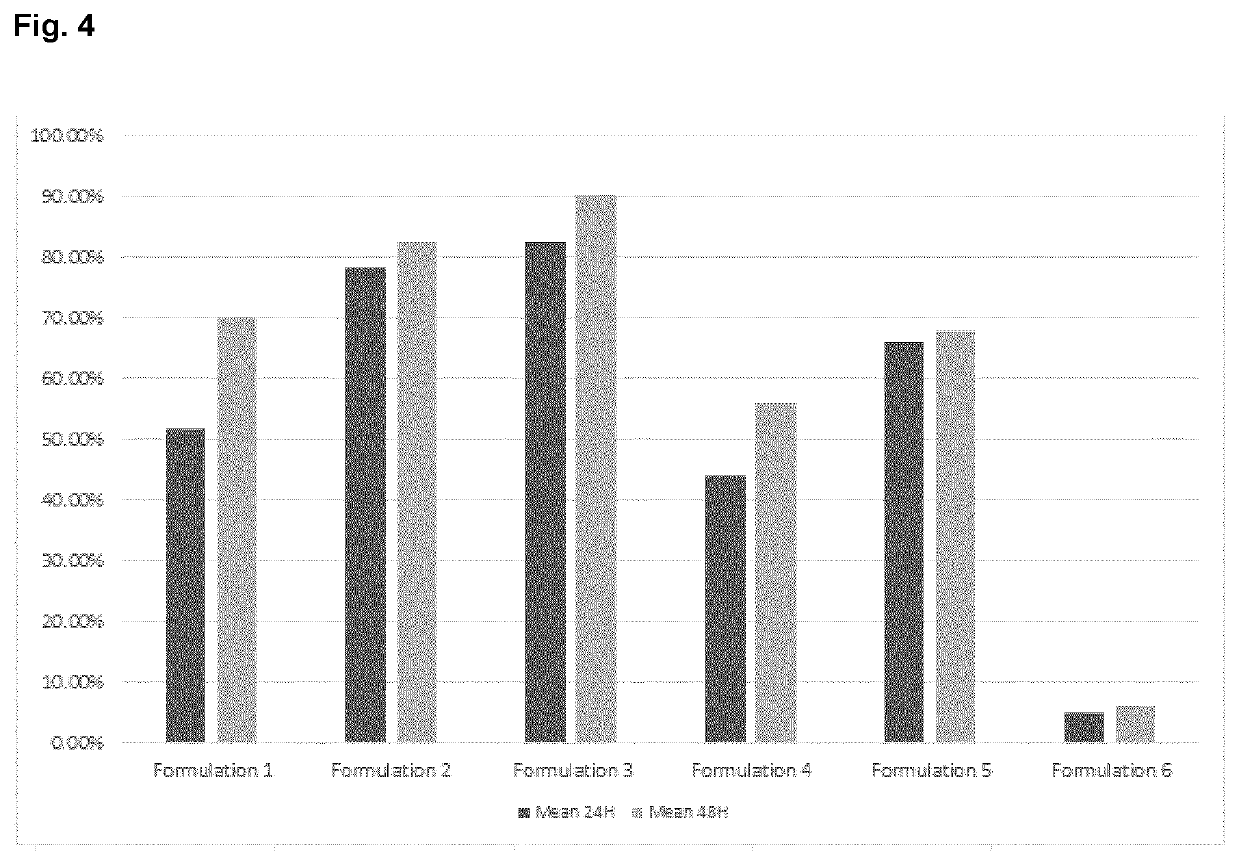Methods and compositions for controlling or reducing pests
a technology of pests and compositions, applied in the field of methods and compositions for controlling or reducing pests, can solve the problems of large losses in non-human animals, infestations and/or infections, and complex classification of pests
- Summary
- Abstract
- Description
- Claims
- Application Information
AI Technical Summary
Benefits of technology
Problems solved by technology
Method used
Image
Examples
example 1
ivity Assessment. Bioassay by Ingestion
[0105]The goal of the present example was to study the activity of different Bacillus thuringiensis (Bt) strains which were also formulated in different conditions, against Dermanyssus gallinae mites using a bioassay performed by ingestion.
[0106]Bacillus thuringiensis (Bt) DSM 33173 strain (strain deposited under the Budapest Treaty by HIPRA SCIENTFIC, S.L.U. (Avda de La Selva 135, 17170 Amer, Girona, Spain) in the Leibnitz-Institut DSMZ-Deutsche Sammlung von Mikroorganismen und Zellkulturen (Inhoffenstraße 7B, 38124 Braunschweig, Germany) under the accession number DSM 33173 on Jun. 20, 2019) and B. thuringiensis DSM 33175 strain (strain deposited under the Budapest Treaty by HIPRA SCIENTFIC, S.L.U. (Avda de La Selva 135, 17170 Amer, Girona, Spain) in the Leibnitz-Institut DSMZ-Deutsche Sammlung von Mikroorganismen und Zellkulturen (Inhoffenstraße 7B, 38124 Braunschweig, Germany) under the accession number DSM 33175 on Jun. 20, 2019), isolated...
example 2
ivity Assessment on Plate Bioassay
[0127]In order to demonstrate the activity of viable spores on mite mortality, a second assay was done. This time a new experimental model was used based on agar plate bioassay instead of the ingestion model used in Example 1. The plate bioassay better resembles future field conditions.
[0128]Different experimental formulations were prepared for the plate bioassay.
[0129]For this purpose, 7.5 g of European bacteriological agar were homogenized in 500 ml of Mili-Q water. The resulting homogenized agar was autoclaved at 121° C. for 20 minutes. 25 ml of the agar solution was then placed per plate (petri dish (such as Greiner bio-one petri dishes, ref. 633181, dish with lid, outside diameter of 93 mm, working volume of 15 ml, max. volume of 80 ml).
[0130]Three different experimental formulations were prepared as follows:[0131]Formulation 1 (non-purified spore preparation): Final suspension of Bt sample (FS Bt sample) described in Example 1 was adjusted wit...
example 3
Dose-Response of Different Bt Compositions
[0142]This example was performed to check the activity of different B. thuringiensis (Bt) compositions comprising viable spores when different doses were used.
[0143]Dermanyssus gallinae's adults and nymphs samples were collected from a poultry (layers) farm with a high infestation rate of Dermanyssus gallinae mites. Healthy and moving mites were selected for performing the dose / response assay. The assay was conducted using the model based on agar plate bioassay (Example 2) but using cell culture flasks (such as Falcon flask, ref. 353107, 12.5 cm2, 25 ml, with vented screw cap) instead of petri dishes (such as Greiner bio-one petri dishes, ref. 633181, dish with lid, outside diameter of 93 mm, working volume of 15 ml, max. volume of 80 ml). The cell culture flasks were previously prepared with European bacteriological agar as described in Example 2. In this case, 11 ml of the agar solution was placed per flask instead of 25 ml per petri dish....
PUM
| Property | Measurement | Unit |
|---|---|---|
| length | aaaaa | aaaaa |
| pH | aaaaa | aaaaa |
| pH | aaaaa | aaaaa |
Abstract
Description
Claims
Application Information
 Login to View More
Login to View More - R&D
- Intellectual Property
- Life Sciences
- Materials
- Tech Scout
- Unparalleled Data Quality
- Higher Quality Content
- 60% Fewer Hallucinations
Browse by: Latest US Patents, China's latest patents, Technical Efficacy Thesaurus, Application Domain, Technology Topic, Popular Technical Reports.
© 2025 PatSnap. All rights reserved.Legal|Privacy policy|Modern Slavery Act Transparency Statement|Sitemap|About US| Contact US: help@patsnap.com



